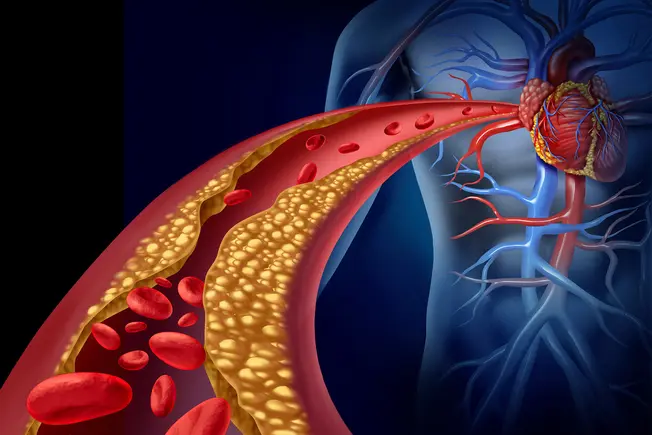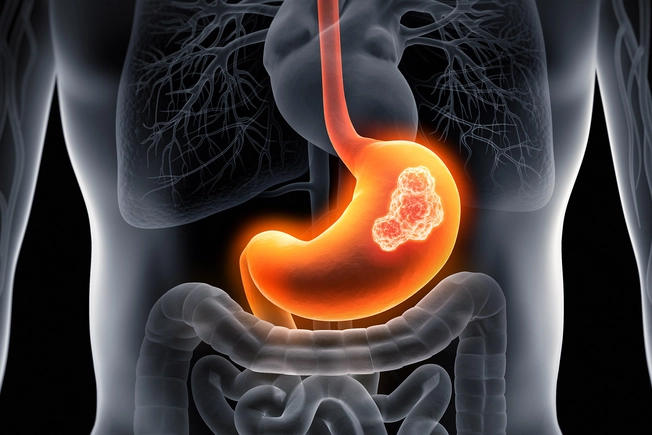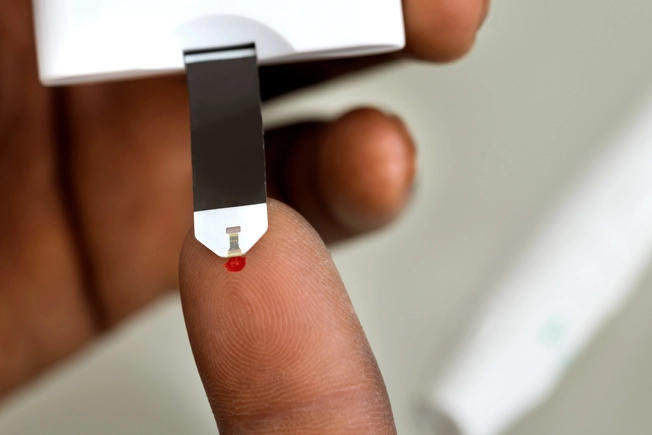Your Water Bottle Could Be Germier Than Your Kitchen Sink
May 13, 2024 — In a world where hygiene is paramount, the notion of reusing a drinking cup day in, day out, without a single wash may sound repulsive. But pause for a moment and ask yourself: How diligently do you sanitize your trusty water bottle? According to experts, the ideal regimen involves a thorough scrub with soap and water every day, ideally after each use. Not doing so could make you sick.
Just ask Lauren Garkow, a Los Angeles-based medical student, who realized that her dirty water bottle was the culprit behind her throat issues.
https://www.tiktok.com/@attn/video/6927061273431624965?embed_source=121374463%2C121433650%2C121404359%2C121351166%2C121331973%2C120811592%2C120810756%2C72248227%3Bnull%3Bembed_blank&refer=embed&referer_url=www.webmd.com%2Fa-to-z-guides%2Fnews%2F20240513%2Fyour-water-bottle-could-be-germier-than-your-kitchen-sink&referer_video_id=6927061273431624965
“I noticed there seemed to be a film on the inside, so I got a paper towel to scrub it and then noticed the mold,” said Garkow, 24. “I made sure to scrub all the way to the bottom, and the whole inside of the bottom was a molded film.”
Soon after, her throat issues resolved.
“The biggest misconception [about reusable water bottles] is that they’re really safer than they are,” said Marianne Sumego, MD, an internal medicine specialist with Cleveland Clinic. “Folks feel like they can’t get sick from them, and they forget that it’s a drinking source — like every other glass we use.”
Reusable water bottles are a hotbed for bacteria and mold since those germs thrive in moist environments, according to a new report from Cleveland Clinic.
“The amount of bacteria that can collect on your water bottle is often more bacteria than there might be in your kitchen sink and other surfaces that we regularly recognize as being dirty,” Sumego said. Remember: Rinsing your bottle with water is not enough. You need to scrub all the nooks and crannies of your bottle with soap and water, and do not forget to clean the removable pieces, as well.
If you have symptoms of food poisoning or flu-like symptoms — such as the sniffles or congestion — and cannot figure out why, your reusable water bottle could be to blame. And the absence of mold in your bottle does not mean that your water bottle is germ-free, according to the report. You usually cannot see the bacteria, so stay diligent on your cleaning regimen.
A few other keys: Have more than one water bottle. With our “grab-and-go” culture, it can seem challenging to make to time to scrub your bottle. Having two or more helps you save time, Sumego advised. When choosing a water bottle, stainless steel and glass water bottles are the most hygienic, since those surfaces “don’t promote as much stickiness for bacteria,” said Sumego. If you are sensitive to mold, opt for stainless steel, as it is usually higher in quality, and the buildup of bacteria and mold is less likely. Also, your dishwasher is a great, hassle-free way to keep your water bottle squeaky clean.
Written by Kelly Wairimu Davis, MS
How Your Blood Type Can Affect Your Health

Heart Disease
There’s good news for O blood types. Research shows your risk of coronary heart disease tends to be lower. Experts aren’t sure why. Some think it might be because other types are more likely to have higher cholesterol and higher amounts of a protein that’s linked to clotting.

Stomach Cancer
A, AB, and B blood types are more at risk than type Os. Specifically, people with type A blood are more likely to get stomach cancer. Researchers think this might be because H. pylori infection is more common in people with type A blood. That’s a bacteria that’s usually found in the stomach. It can cause inflammation and ulcers.

Memory
A small study showed that people with memory problems had type AB blood more than any other.

Pancreatic Cancer
Your risk is higher if you’re type A, AB, or B. Molecules in type A and B red blood cells help certain bacteria called H. pylori grow in your gut. It can make you more likely to get pancreatic cancer.

Stress
Stress boosts your body’s level of cortisol, the stress hormone. People with type A blood tend to have more cortisol, anyway. So you may have a harder time dealing with stressful situations.

Malaria
Type O blood may help ward off this disease. You can get malaria when an infected mosquito bites you. The parasite that causes it has a harder time attaching itself to type O blood cells.

Ulcers
Peptic ulcers — painful open sores that crop up in the lining of your stomach or upper intestine — seem to happen more often with blood type O.

Blood Clots
Venous thromboembolism (VTE) is when your blood clots in a deep vein, like the ones in your legs. These clots sometimes move to your lungs. Research shows that people with type A, B, or AB blood are at a higher risk of VTE.

Life Span
Chances are higher you’ll live longer if you have type O blood. Experts think your lowered risk of disease in your heart and blood vessels (cardiovascular disease) may be one reason for this.

Fertility
Your blood type can’t predict whether you’ll get pregnant, but it may play a role. In one study, women with low numbers of healthy eggs were more likely to have type O blood than any other type. More research is needed to figure out why.

Diabetes
Type 2 diabetes seems to happen more often in people with blood types A and B. Experts aren’t sure why. More research is needed.

Stroke
Your risk for a stroke goes up if you have blood type AB. Doctors think that’s because it’s more likely to clot than other types.
Source: https://www.webmd.com/a-to-z-guides/ss/slideshow-how-your-blood-type-affects-your-health
Could a new Alzheimer's biomarker help diagnose the disease before symptoms show?

Researchers are looking for new biomarkers to help them diagnose Alzheimer’s before symptoms develop. Image credit: recep-bg/Getty Images.
. There are currently about 32 million people globally living with Alzheimer’s disease, with that number expected to grow.
. Right now it is difficult to diagnose a person with Alzheimer’s disease in the asymptomatic stage before they start showing symptoms.
.Researchers from the University of Barcelona in Spain have identified a biomarker within the asymptomatic stages of Alzheimer’s disease.
With about 32 million peopleTrusted Source around the world currently living with Alzheimer’s disease, and that number expected to growTrusted Source over the next few years, researchers are hard at work trying to find new ways to diagnose the condition as soon as possible.
“One of the major problems in the study of Alzheimer’s, or dementia, in general, is that by the time a patient comes in for a consultation, they already have symptoms, most often with mild cognitive impairment, indicating that dementia has begun to develop,” explained José Antonio del Río, PhD, group leader at the Institute for Bioengineering of Catalonia (IBEC), professor at the Faculty of Biology of the University of Barcelona, member of the Institute of Neurosciences of the University of Barcelona.
“Therefore, it is important to search for markers that, before the appearance of these deficits, can suggest the onset of these processes before they occur,” he told Medical News Today.
Del Río is co-lead author of a study on Alzheimer’s recently published in the journal Biochimica et Biophysica Acta (BBA) – Molecular Basis of Disease.
The marker del Rio refers to is a biomarker — a specific, measurable characteristic of the body that can be used as a sign of normal health processes or disease.
For this new study, del Río and his team have identified a new biomarker within the asymptomaticTrusted Source (symptom-free) stages of Alzheimer’s disease, which is when a person’s brain may have biological changes occurring but does not yet show any cognitive symptoms.
A biomarker to predict Alzheimer’s disease?
The new biomarker scientists discovered through this study is a molecule called miR-519a-3p, which is a type of microRNATrusted Source directly linked to the expression of the cellular prion proteinTrusted Source.
“These types of molecules are short RNA fragments that play a significant role because their function is to silence the gene expression of certain genes at the mRNA level,” del Río explained to MNT.
“In this way, they control the levels of numerous proteins in different cell types. There is substantial evidence that changes in the expression of these ‘controllers’ can affect processes such as cancer and other pathologies,” he pointed out.
To find out if miR-519a-3p was truly a biomarker for Alzheimer’s disease and not other neurodegenerative diseases, they compared biomarker levels in samples from other tauopathiesTrusted Source and Parkinson’s disease.
Scientists reported that this confirmed that the changes in miR-519a-3p were specific to Alzheimer’s disease.
“For neurologists, it is very important to clearly determine the pathology they are facing,” del Río said. “Sometimes there are comorbidity processes where a patient can have more than one pathology at the same time.“
“In our case, what we wanted was to find a biomarker that could be exclusively modified in Alzheimer’s, so it would not be altered in other diseases. This is relevant to generating specific signatures for each disease to achieve a better diagnosis,” he told us.
How new biomarkers could lead to early Alzheimer’s diagnosis
As there is currently no cure for Alzheimer’s disease, previous research shows early diagnosis of the condition can help with treating symptomsTrusted Source and slowing disease progressionTrusted Source.
The researchers of this study believe their biomarker findings may help provide a more accurate diagnosis within the early stages of Alzheimer’s disease.
Del Río said that:
“The results we have obtained have been carried out at the brain level to date. However, this miRNA is also found in blood. Our most important challenge now is to develop the necessary technology to detect small changes that would allow us to determine the early presence of Alzheimer’s in samples routinely obtained in hospitals. In this regard, we do not rule out combining these studies with others we are conducting on different miRNAs to develop this early signature of the disease.”
“Now we need to work with patient cohorts with the support of clinical groups to develop, adapt, and improve the techniques to detect these changes in the asymptomatic stages of the disease,” he added.
‘Time is brain’: Early diagnosis can help preserve cognitive function
After reviewing this study, Karen D. Sullivan, PhD, ABPP, a board-certified neuropsychologist, owner of I CARE FOR YOUR BRAIN, and Reid Healthcare Transformation Fellow at FirstHealth of the Carolinas in Pinehurst, NC, told MNT she is always hopeful to see new research that may help us diagnose Alzheimer’s disease in the earliest stage possible.
“Time is brain — the longer someone waits for an accurate dementia diagnosis, the more time is wasted to personalize therapies with the goal of stabilization,” Sullivan explained.
“We’ve known for some time that the physiological disease process in Alzheimer’s disease is happening decades before the clinical symptoms of trouble with new learning and short-term memory are revealed,“ she told us.
“That’s where we all want the advances to happen — as early as possible before we lose networks of brain cells and the damage becomes irreversible,” noted Sullivan.
More diagnostic tools for early-stage Alzheimer’s needed
MNT also spoke with Manisha Parulekar, FACP, AGSF, CMD, director of the Division of Geriatrics and co-director of the Center for Memory Loss and Brain Health at Hackensack University Medical Center in New Jersey, also not involved in this study.
Parulekar agreed it is important to have more tools to diagnose Alzheimer’s at an early, asymptomatic stage.
“This will allow early interventions and support for patients and care providers,” she told us. “We are continuing to look for effective treatments for Alzheimer’s. Identification of various biomarkers can potentially help understand the pathophysiology, which will help us in identifying effective treatments.”
“It is exciting to see various biomarkers to help assist with early diagnosis — this will allow us to continue making progress in getting an effective treatment for this devastating disease that affects millions of people,” the expert added.
Written by Corrie Pelc on May 20, 2024 — Fact checked by Jill Seladi-Schulman, Ph.D.
Why are men at higher diabetes, diabetes complications risk than women?

New research investigates why men tend to develop diabetes at lower BMIs and younger ages than women. Image credit: Halfpoint/Getty Images.
- Men and women have different fat distribution, and doctors already know that this can affect men’s risk of cardiovascular disease and type 2 diabetes.
- Men tend to develop type 2 diabetes earlier and at a lower BMI than women.
- Researchers from Karolinska Institutet in Stockholm, Sweden have shown that abdominal fat in obese men with type 2 diabetes has higher insulin resistance and different levels of gene expression than women.
- Another set of researchers from Australia have shown that men are more likely to develop type 1 and type 2 diabetes-related complications than women.
Men with type 2 diabetes and obesity exhibit a higher level of insulin resistance in their adipose tissue than women.
This sex difference in people with type 2 diabetes was observed by scientists from the Karolinska Institutet in Stockholm, Sweden.
Researchers discovered that this higher level of insulin resistance in men was due to a less efficient inhibition of fat cell lipolysis, the process of metabolizing fat.
Evidence suggests that the breakdown of fat cells by lipolysis leads to raised levels of free fatty acidsTrusted Source, which can contribute to inflammation and insulin resistance. They also pinpointed a gene that could play a role in the greater level of insulin resistance seen in men.
First author Daniel Andersson, PhD, MD, consultant cardiologist and assistant professor at Karolinska Institutet, told Medical News Today:
“Our research group has been interested in studying different aspects of insulin resistance in adipose tissue for several years. It is well known that there are sex differences between men and women and the risk of getting type 2 diabetes. However, the underlying mechanisms for the sex difference in risk and the impact of local insulin resistance in adipose tissue is not fully understood.”
The results of this study first appeared in the International Journal of ObesityTrusted Source in March 2024, and were presented at the European Congress on Obesity (ECO) in Venice, Italy held between 12–15 May.
Sex differences in fat production and metabolism
People with type 2 diabetes were recruited to the study from the Stockholm area between 1993 to 2020 for a range of studies on metabolism.
For this part of the study, 2,344 women and 787 men were recruited, who self-reported stable weight for 3 months. They were invited to attend a clinic at 8 a.m., after overnight fasting.
Data was also collected on their BMI, age, physical activity, cardiometabolic disease and tobacco use. Researchers performed a blood test that measured circulating levels of fatty acids and insulin in male and female participants, and adjusted this for BMI, physical activity, cardiometabolic disease and tobacco use.
A subset of a subset of 259 female and 54 male participants also had subcutaneous fat samples taken from their abdominal area.
The blood test, called Adipo-IRTrusted Source, indicated that men had higher circulating levels of fatty acids and insulin values than women but only when they had obesity.
These sex differences occurred regardless of the level of physical activity, the presence of cardiometabolic disease, or nicotine use.
The researchers discovered that there were differences in the levels of lipolysis and lipogenesis (fat production), and cells’ sensitivity to them, between men and women with obesity, but not in those without obesity.
In fact, the adipose tissue of women with obesity exhibited 10 times higher insulin sensitivity than men. Fat cells taken from men with obesity exhibited twice the rate of lipolysis than women.
The genetic expression of a second group was also investigated, with a group of 115 men and 234 women with obesity included in the study.
Researchers looked at the mRNA expressed in the fat cells to determine which genes were being expressed. They discovered that the gene encoding insulin receptor substrate 1 IRS1 was expressed less in men than in women.
Further analysis showed that there were differences in the expression of certain genes, including testosterone receptors in male fat tissue, compared to fat tissue taken from women.
The study authors propose that the sex differences seen are due to the different hormone profiles of men and women affecting the metabolic pathways in the adipose tissue.
Alexandra Kautzky-Willer, MD, from the Medical University of Vienna, specialist in endocrinology and gender medicine, not involved in this studies, told MNT that “[w]e know that women have to put on more weight to develop diabetes,” which means that they often have a higher BMI than men at the time of diagnosis, and that is why they exhibit similar insulin resistance to men at that point.
Men face higher risk of diabetes complications
Previous researchTrusted Source has shown that men are more likely to develop type 2 diabetes at lower BMIs than women, and some experts thought that this was to do with different fat distribution. Men also tend to develop this condition when at younger ages.
Another study published recently in the Journal of Epidemiological Community Health showed that men were at greater risk of developing complications related to type 1 and type 2 diabetes than women, irrespective of how long they had the condition.
Analysis of a cohort of 25,713 men and women over the age of 45 based in Australia showed that men were at a 51% increased risk of cardiovascular disease compared to women, a 47% increased risk of lower limb complications, 55% increased risk of kidney complications and 14% increased risk of diabetic retinopathy.
Should men and women follow different diabetes treatments?
If there are sex differences when it comes to insulin resistance and to the risk of major complications associated with diabetes, the question arises: Should men and women also follow different treatment pathways?
“Drugs that reduce weight are preferred for all patients with type 2 diabetes but especially for women,” said Kautzky-Willer. She explained to MNT that some different GLP-1 agonistsTrusted Source were more effective in women than menTrusted Source.
“During puberty women are more insulin resistant, but thereafter more insulin sensitive than men until menopause; and better insulin response and better lipid profile (lower LDL cholesterol) and lower blood pressure. They have better fat storage (energy reserve for possible pregnancies); however, after menopause, women lose their biological advantage and develop the androgen phenotype,” she detailed.
The authors of the first study propose that their findings suggest that insulin resistance in men with obesity could be specifically targeted with pharmaceutical and lifestyle interventions to prevent type 2 diabetes, but that their findings need to be backed up with prospective studies.
Investigating sex differences in diabetes: Avenues for future research
The reasons for the differences in fat distribution and behavior needed to be further investigated, said Kautzky-Willer.
“We need to investigate sex and gender differences in therapies and interventions. Most studies are underpowered to give valuable insights and in most studies women are only 30% [of the cohort],“ she pointed out.
“However, in obesity studies there are usually much more women (70%), and thus even in some obesity randomized control trials we have approximately 50% women,“ she further suggested. “So we have the chance to explore sex differences in pathophysiology and response to treatments.“
To do improve diabetes research, Kautzky-Willer argued:
“[I]t will be necessary to measure more than just weight reduction as an outcome! We need to explore the changes in body fat distribution and lean mass (muscle!), and study changes in intraorgan fat deposits — [fat deposits inside organs, such as the] pancreas, heart etc. Then we could be able to detect new targets and start real precision therapy in men and women.”
Around 95% of the cohort of the first study were of white European origin, so it is not possible to extrapolate its findings to people of different ancestries, despite people of African and Asian ancestry being more likely to develop type 2 diabetes. Another step forward, therefore, should also be to diversify participant cohorts in studies on diabetes.
Written by Hannah Flynn on May 17, 2024 — Fact checked by Jill Seladi-Schulman, Ph.D.

